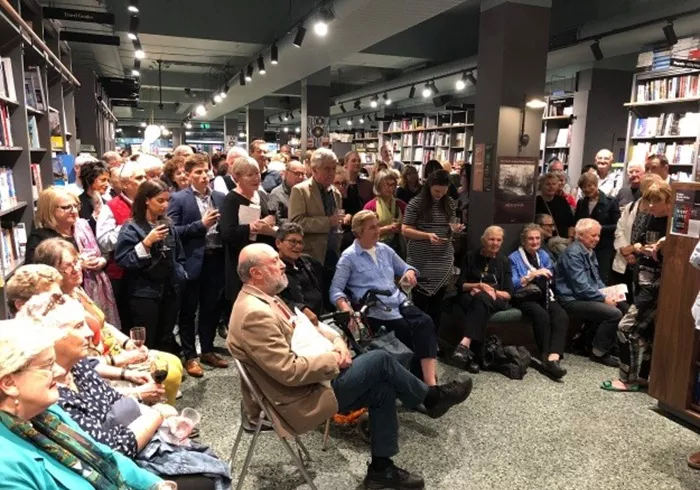In her ninth novel, The Buried Life, Andrea Goldsmith confronts the profound themes of death, denial, and uncertainty. Set against the backdrop of Melbourne’s educated middle class, the novel weaves a complex narrative exploring emotional insecurity and familial dysfunction. Through the lives of its protagonists—Adrian, Laura, and Kezi—Goldsmith navigates the tension between personal turmoil and the pursuit of meaningful change.
Goldsmith’s writing, while delving into grand themes, is subtle rather than sensational. She explores the fear of death—not merely as an end but as a fear of the unknown, one that can hinder the necessary transformations in life. The novel’s title, derived from Matthew Arnold’s poem The Buried Life, underscores this tension, suggesting that much of what we seek in life lies hidden beneath layers of denial.
A Deep Dive into Human Flaws
The narrative unfolds around Professor Adrian Moore, a scholar of contemporary death studies, who remains emotionally stunted despite his professional expertise. Haunted by childhood loss and grappling with depression, Adrian refuses to confront his painful past, instead focusing on intellectual pursuits. His research, grounded in spirituality and Epicureanism, serves as a shield against his emotional vulnerability. The breakdown of his long-term relationship with Irene further isolates him, yet his close friendship with Keziah Ferguson, a young paper-maker, becomes a lifeline.
Kezi, rejected by her strict religious family for her sexuality, is struggling to reconcile her grief with her newfound independence. Her bond with Adrian—marked by moments of solace and understanding—offers her a path toward healing, even as she wrestles with her internal conflicts. This unlikely friendship becomes a vital part of her journey, providing the emotional anchor she so desperately needs.
The Complexities of Love and Loss
The story takes a pivotal turn when Adrian meets Laura Benady, a striking 57-year-old social scientist. Like Adrian, Laura’s life has been shaped by profound early loss. Her marriage to the manipulative Tony Sheldrick has stifled her sense of self, and despite her professional success, she remains entangled in a toxic relationship that has spanned decades. Laura’s dynamic with Tony reveals a chilling portrait of coercive control, with Goldsmith depicting their marriage not as one of overt violence, but as a slow, suffocating loss of agency.
Goldsmith’s portrayal of Laura’s entrapment is both subtle and powerful. Rather than relying on stereotypical portrayals of abusive relationships, the author presents a nuanced view of the emotional and psychological costs of long-term manipulation. Laura’s journey towards self-awareness is fraught with self-blame and confusion, adding depth to her struggle.
Despite her emotional constraints, Laura begins a transformative relationship with Adrian. Their connection starts innocuously, through shared lunches and long conversations, but soon evolves into a more profound bond. However, Laura’s belief that she would be nothing without Tony continues to hinder her ability to fully embrace a life beyond him.
Interwoven Lives and the Search for Meaning
As the characters’ lives intersect, Kezi and Laura form an unexpected yet pivotal connection, one that mirrors the growth each experiences in their relationships with Adrian. Kezi, having just ended her own troubled relationship, shares with Laura the struggles of growing up in a dogmatic, oppressive environment, prompting Laura to reflect on her own entrapment within her marriage.
Goldsmith’s treatment of themes like domestic abuse, coercion, and psychological control avoids melodrama, instead opting for a measured exploration of the power dynamics at play. As Laura slowly begins to recognize her role in the toxic cycle, she faces a painful and tentative path toward self-liberation.
The novel builds toward a critical confrontation with mortality, yet Goldsmith’s broader message reveals that death manifests not only physically but also in psychological, emotional, and spiritual forms. The characters’ vulnerabilities, intertwined with the looming specter of death, lead them through personal crises that challenge societal and cultural norms.
A Highbrow Narrative with Emotional Resonance
The Buried Life is unflinchingly intellectual, with references to classical music, literature, and philosophy playing a central role. Adrian’s growing obsession with Gustav Mahler, catalyzed by a seemingly inconsequential encounter with the composer’s music, serves as an emotional anchor for his evolving relationship with Laura. However, the connection between Mahler’s music and the novel’s narrative feels somewhat tangential, and readers not familiar with the composer may find this subplot extraneous.
The novel also touches on several other issues that could benefit from deeper exploration. For example, Kezi’s brief affair with her mother’s best friend raises complex questions about consent and responsibility, but it is mentioned in passing rather than fully explored. Similarly, while Laura’s relationship with Adrian challenges societal norms, her initial reluctance to embrace her attraction to him feels somewhat underdeveloped.
Despite these minor issues, The Buried Life remains a compelling and thought-provoking narrative. Goldsmith’s portrayal of her characters—flawed, relatable, and deeply human—provides an insightful meditation on life, love, and the inevitability of death. The novel is as much about confronting the existential realities of our lives as it is about finding hope in the face of uncertainty.
Ultimately, The Buried Life offers a sophisticated exploration of emotional and psychological depth, tackling complex themes with grace and insight. It is a poignant and heartfelt narrative that resonates long after the final page.

